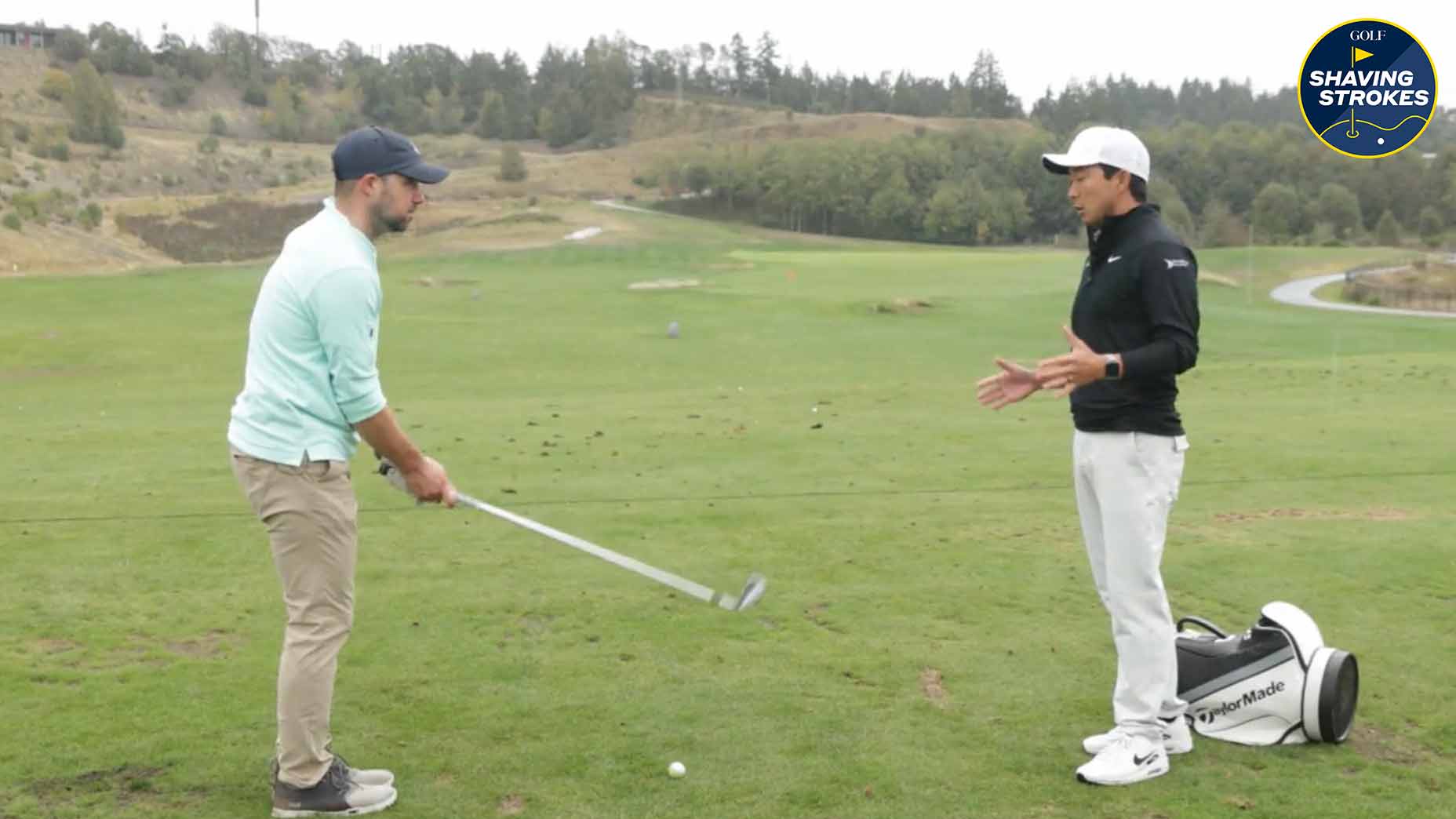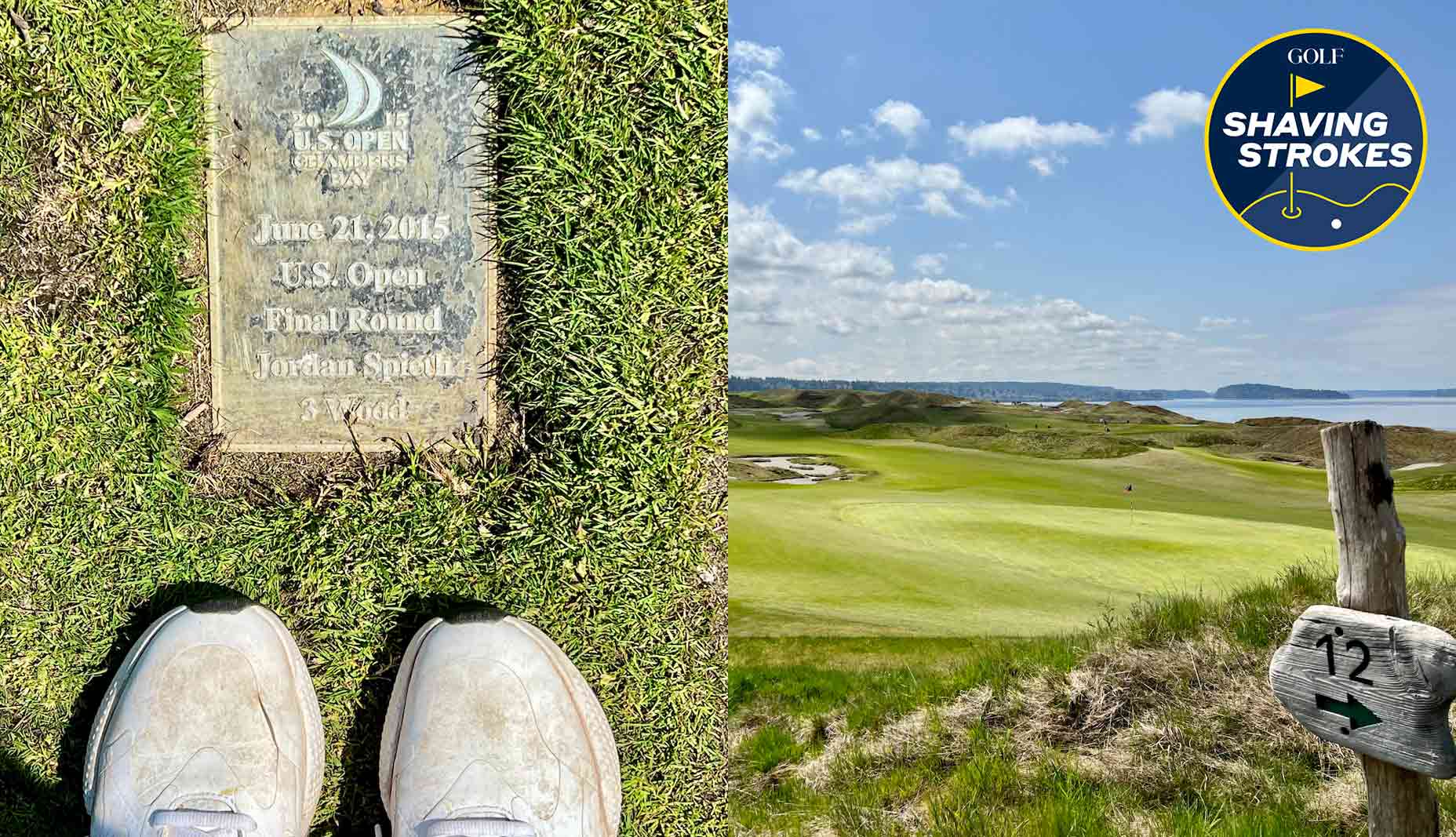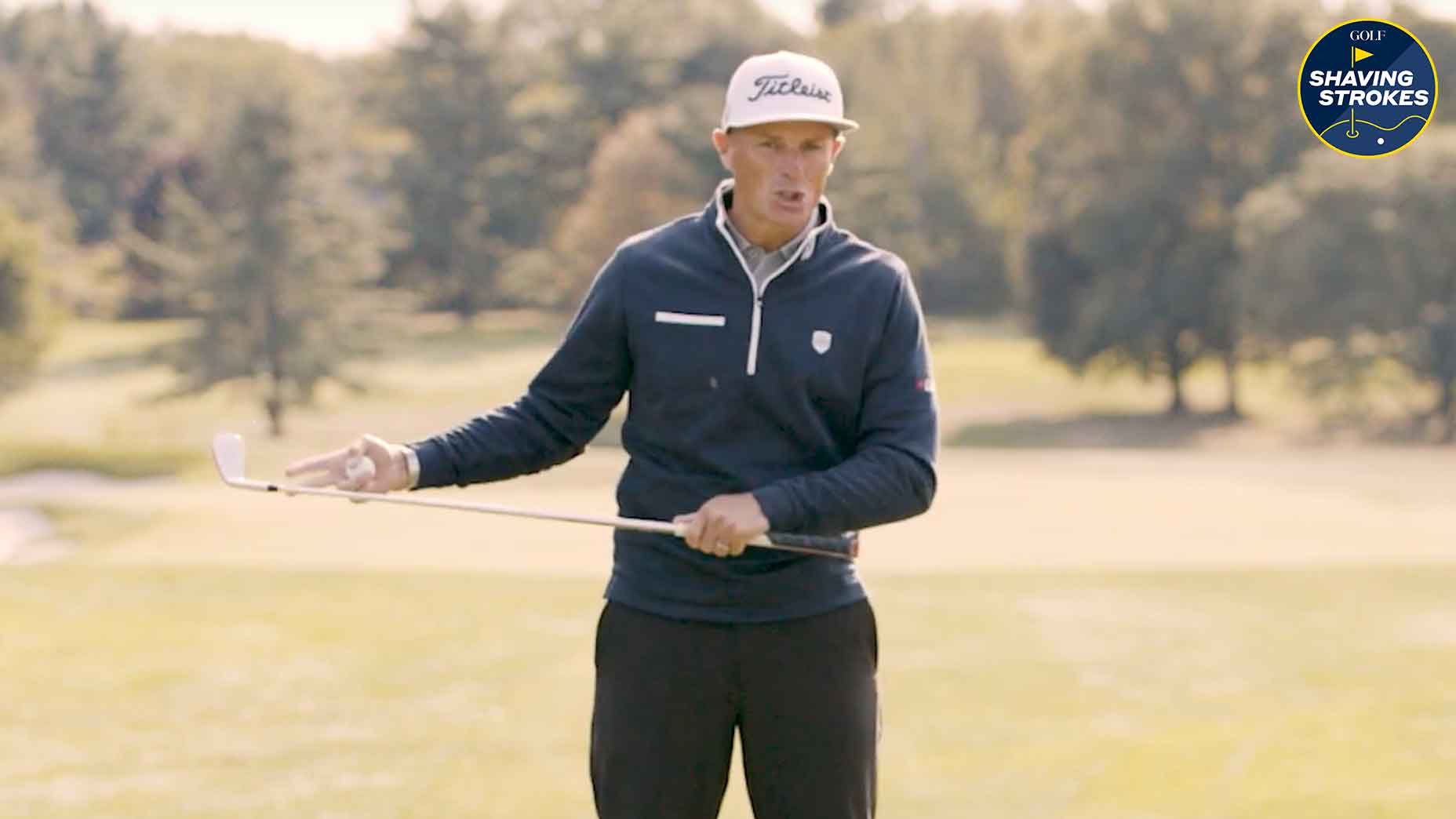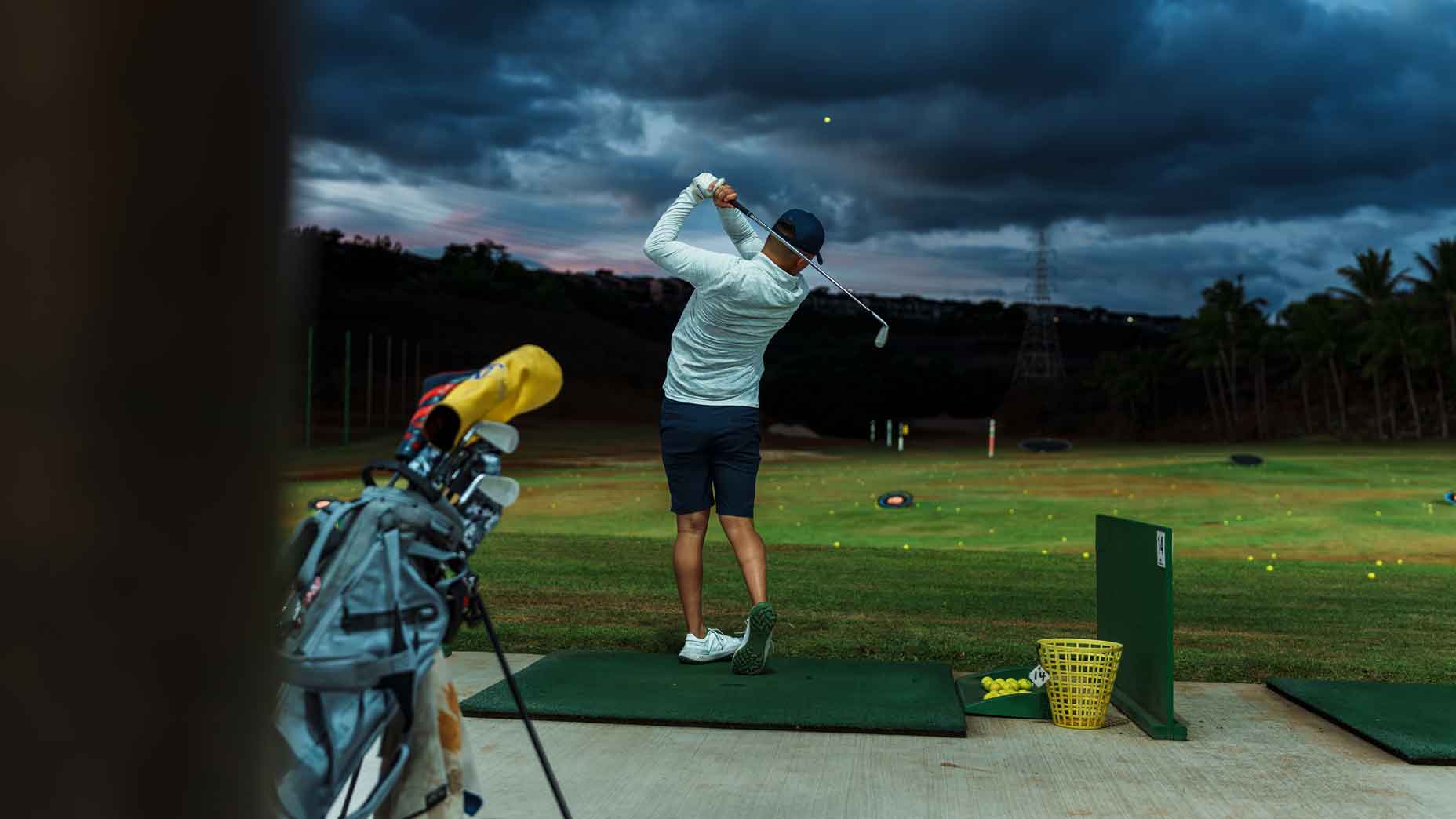3 difficult golf shots that every mid-handicapper should be practicing
- Share on Facebook
- Share on Twitter
- Share by Email

To become a better ball-striker, push yourself to practice these difficult shot types.
Images via GOLF // Nick Dimengo
Isn’t it funny how the anticipation of an event (and a little anxiety) can change the way you structure your golf practice?
Over the past few months, I’ve really been working on basic things like hitting more fairways (which has been successful), compressing my iron shots (still a work in progress), and dialing in my short game (needs lots of work). But as I get ready to play in my first-ever Member-Guest next weekend at Chambers Bay — host of the 2015 U.S. Open — my practice routine has shifted into more elevated parts of the game.
This U.S. Open site beat me down, but it also helped me become a better playerBy: Nick Dimengo
If you’re unfamiliar with Chambers, the course is a links-style layout that offers a little forgiveness of the tee, really difficult iron shots, and then fear-inducing short game shots that require some creativity. For instance, instead of flighting an attack wedge from 90 yards out, it’s not uncommon to choke down on an 8-iron, put the ball position in the back of your stance, give it a 50 percent swing, and let your ball use the undulation to roll up and onto the putting surface.
Given its difficultly, shot-shaping and distance control are crucial at Chambers — so prior to the upcoming event next weekend, I’m working on dialing in these more elevated aspects of my game.
To help, I tapped GOLF Teacher to Watch Ryan Young, the Head Golf Pro at Chambers Bay, who gave me some tips on how to execute these types of shots — which should help when I’m playing in the Member-Guest event (which you can register for here, if you’re interested, using the code “BEATNICK”).
Take a look below to see how you can learn these tricky, more difficult shots, and why it’s time to add them to your golf practice routine.
Add these difficult shot types into your golf practice
Dialing in distance control
Personally speaking, this remains one of the hardest things for me to consistently accomplish, as I often try to maximize distance as much as possible with every club in my bag. Of course, that’s not the name of the game, as different shots require different types of touch and speed.
During my lesson, Young had me use a 7-iron, then gave me a simple formula to use in order to shorten my backswing and become better at controlling my distances.
“Distance control is done in two parts, swing speed and the width of your stroke. So assuming your tempo is the same, because we want to keep it consistent, we only have to look at the width of your stroke,” he tells me. “Instead of thinking about a clock system [where you treat your club like a hand on a clock], keep it simple and use a full swing, a half swing, and somewhere in-between — and if your 7-iron can’t take care of those distances, switch to the 6-iron.”
With that concept in place, Young presented me with a challenge: Take enough off my 7-iron to only hit it 145 yards (which I usually hit 165 yards).
“The key tip for all of this is to finish your swing on all three shot types,” he says. “Don’t go half-to-half, otherwise this thing is going 100 yards. You want to make sure you go half-swing to full-swing.”
With the help of a launch monitor, we tracked my shot and, boom, I hit it 147 yards — just two yards off the number. I’d say I won that bet.
Knockdown shots
Very few amateur players spend time on knockdown shots during golf practice. But on a course like Chambers Bay — which is nestled up against the Puget Sound and can experience windy conditions — having this type of shot in your arsenal is paramount.
Having the ability to decrease spin and control the ball-flight is a more advanced skill, but Young talked me through how to hit this with success.
This 1 element is critical when shaping shots, says top teacherBy: Nick Dimengo
“It all starts with your setup, so put the ball back in your stance and focus on your attack angle — you can’t be steep, so you’ve got to be wide,” Young tells me. “Think about having less hinge and, instead, reaching out like you would with a driver, keeping the club shallow to the ground and then abbreviating the follow through so your hands never release. If they do, you add spin, which you don’t want on this type of shot.”
After talking to me about the setup, Young explained what the stroke should look like.
“It should almost look like a hockey slap shot,” he said. “At address, lean onto your lead leg to cover the ball and deloft the clubface, and then your swing should be wide-to-wide.”
Hitting a 3-wood from the fairway
Maybe it’s just me, but hitting my 3-wood is a struggle — so I usually avoid it and oftentimes just lay up during a round. But during a competition like a Member-Guest, I’ve got to be more aggressive to save myself some strokes, so Young came to my rescue to help perfect my 3-wood.
“A lot of people can’t hit the 3-wood off the ground, so you’re not alone,” he told me.
As Young talked me through this shot, he reminded me to focus on my angle of attack — which is going to help avoid any thin or fat shots, as well as any chunked or skulled ones.
“Thinking about the angle of attack, you either top your 3-wood because you’re swinging too far up on the ball, or you’re getting stuck into the ground,” Young explained.
Unsurprisingly, I chunked my first shot (which I wish I had on video to show, because this has become my M.O. when hitting a damn 3-wood). Luckily, Young came to my rescue.
“You’re chunking because you’re too up on it, so you need to treat this type of shot like you’re using a 7-iron,” he told me. “You need to make sure you get to your lead side and hit down and across on this.”
Too many mid-handicappers often lean back to try and help the ball get airborne when using a 3-wood — which throws off the angle of attack and leads to the club digging. But using the tips above will help you make better contact and avoid those unnecessary strokes.

The Draw Board
View Product
Latest In Instruction

Nick Dimengo
Golf.com Editor

Golf.com Contributor











